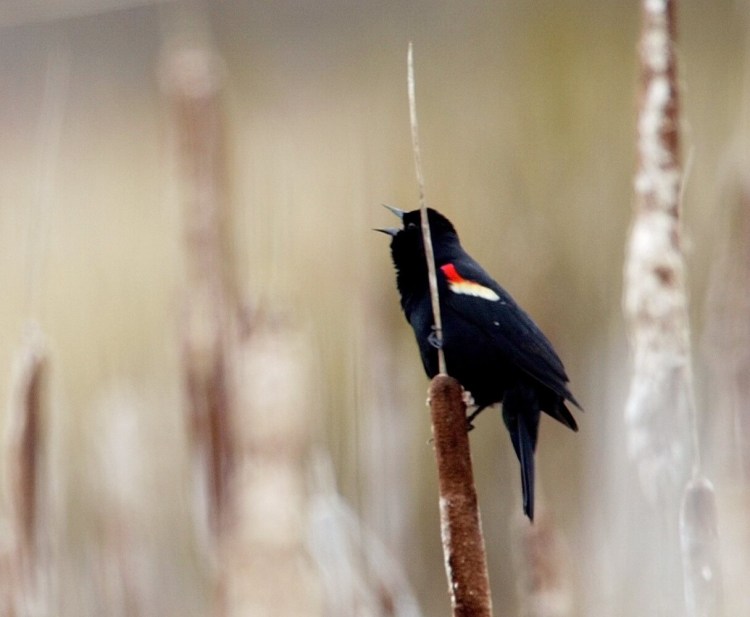Fleas! Eek or Hurray?
What does an overabundance of snowfleas in one spot indicate?
Susan Sidwell, Union
To understand the occasionally encountered abundance of snowfleas, it helps to understand a bit of their natural history. First of all, despite the name, they are not fleas. Phew, right?! Snowfleas don’t feed on blood; they feed on decaying organic material. So unless you are a fungal spore, you don’t need to worry about being bitten by a snowflea.
We’ll use the colloquial name “snowflea” because Hypogastrura nivicola is a mouthful, but they are actually a type of arthropod called a springtail. Springtails can retract and then release a special organ on their abdomen, thus springing themselves into the air, “jumping” nearly 100 times their body length. This may seem remarkable, but keep in mind snowfleas are only 2-3 mm long.
The species name nivicola, meaning “snow dwelling,” is a bit of a misnomer. We typically see snowfleas only in the winter because they contrast starkly with white snow. They are actually abundant year-round, with some springtails numbering up to 250,000 in an acre. Snowfleas are all around us, all the time! We tend not to see them because they are tiny, and are often concealed underneath rotting logs or decaying leaves.
While most insects can’t survive during the cold winter, snowfleas can be active thanks to the evolution of a protein in them that acts like antifreeze. So, during the warm winter days we’ve been having, you may have seen an increase in snowfleas out on the surface of the snow — look closely or you might think it is just a dirty patch. It is believed they are gathering in search of food. Increased sightings may also be due to their becoming “trapped” in depressions like footprints or tracks. If you are only a few millimeters long, a footprint can be a pretty deep trap to get caught in. As we head further into spring, look for Hypogastrura nivicola during your outdoor adventures and appreciate the work they are doing as decomposers.
Return of the Red-winged Blackbirds
We saw a flock of red-winged blackbirds in our yard and feeder area yesterday. I’ve rarely seen them in February. Is it early?
Donald Verger, Portland
The arrival of red-winged blackbirds in Maine is one of my favorite ‘true’ signs of spring. The commonly-held belief that American robins are a sign of spring is not true for most of Maine. Robins are highly nomadic in winter, moving from one food source (generally a fruit-bearing tree) to another. Most do migrate to warmer points south but some stick it out. Almost all red-winged blackbirds, on the other hand, typically leave Maine for the winter. Unlike some long-distance migrants, like many of our warblers that migrate to the neotropics in the winter, red-winged blackbirds are “near-migrants” that stay mostly in the U.S. Since they stay so close, their movements will be based on variable factors like temperature, rather than consistent cues for long-distance migrants, like photoperiod, the scientific term for the amount of daylight in a day. So when we have a series of warm days, eager male red-winged blackbirds will risk moving up early so they can claim territories. It’s a strategy that comes with some risks, obviously: what if we get more snow and frigid temperatures?
Is it earlier than usual? We can use eBird.org, a database of bird sightings run by the Cornell Lab of Ornithology, to see how this year compares to the past. To make each year comparable, we’ll look at frequency of reports — the percentage of all the reports that came in — that included red-winged blackbirds. This year we appear to be on average with the past five years, with red-winged blackbirds reported being seen in late February on a little over 5% of lists. Extending that look to the past two decades, though, shows a slight trend of red-winged blackbirds showing up earlier, in mid- or late- February rather than mid-March.
We know red-winged blackbirds arrive each spring based on the weather: moving earlier in warmer years and lingering in colder years. Although more data may be needed to answer what the impacts on red-winged blackbirds will be, everything points to them arriving slightly earlier on average over the long term — another signal in our own backyards about the planet’s changing climate.
Have you got a nature question? Email questions to ask@maineaudubon.org and visit maineaudubon.org to learn more about volunteering, classes, bird walks, and other programs about wildlife and habitat.
Send questions/comments to the editors.




Comments are no longer available on this story